He didn’t know it at the time, but for Dean “The Weapon” Robinson, an adolescence spent grabbing wild steers by the horns and being trampled in a public arena was the perfect grounding for what was to come.
As the man who became the convenient patsy in Australia’s biggest sports doping scandal, Robinson’s formative years in the brutal world of rodeo were an apt precursor to his public execution by the Essendon Football Club 10 years ago.
Robinson – we will get to his nickname later – spent an action-packed youth on his family’s horse stud on the outer fringes of western Sydney. He wasn’t known as The Weapon then. He was just Dean, a kid who loved horses.
In the late 1970s Campbelltown was not so much a burgeoning suburb as a small country town. Alongside younger brother Trent – now in his 10th year as head coach of the NRL club the Sydney Roosters – Dean Robinson led a knockabout rural existence half an hour from the CBD and a world away from city life.
Both Trent and Dean studied at St Gregory’s College in Campbelltown and shared an obsession with agriculture and animals. Trent was passionate about conservation and dreamed of working in Africa before succumbing to the lure of rugby league. Dean’s interest in animals led him in a very different direction, moving to Texas to try his hand as a professional in the roughhouse world of rodeo.
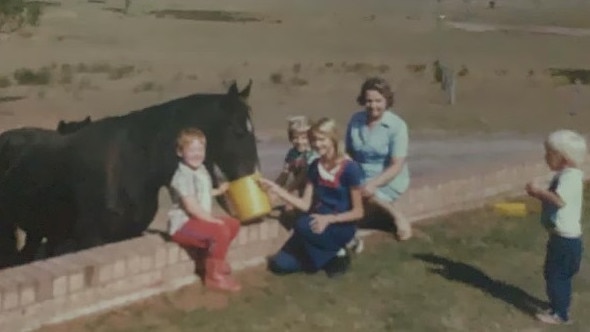
Robinson did so well in the United States that he became a household name in the late 1990s as a steer wrestler. His involvement with the sport started somewhat comically as a rodeo clown, distracting bulls while wearing a red nose, wig and floral pants to prevent them stomping on competitors, but his proficiency as a steer wrestler was such that he was drawn to and excelled at the sport.
Robinson says steer wrestling is a skill that has no real recognition in Australia but in Texas is a mainstream sport with a big TV audience and huge live crowds. There are two key players in steer wrestling: the hazer, the cowboy who rides alongside the steer to keep it running in a straight direction, and the wrestler, who jumps off his horse at the right moment to grapple the steer by the horns and immobilise it.
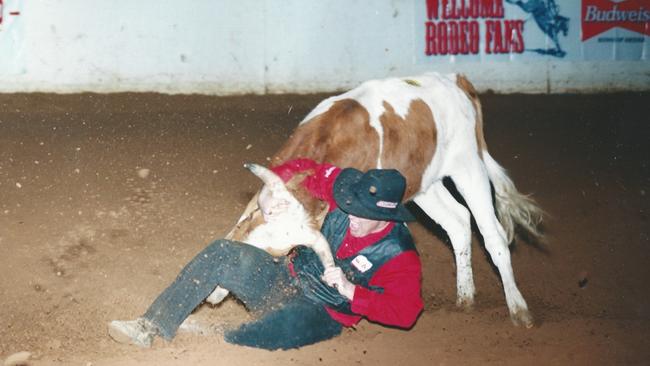
“Originally I was interested in calf roping but found myself getting more and more drawn to steer wrestling,” Robinson says. “I ended up becoming obsessed with it. It’s quite a unique skill. Two people ride up alongside the side of the steer. The hazer is on the right side, you’re on the left, you get down on the back of the steer, slide up, grab it by the horns and throw it to the ground. I had been doing it here in Australia and decided that I wanted to go and give it a crack at the big time in the US. I was 21 years of age. I wanted to go and learn from the best, compete with the best, so that’s how I ended up in Texas.” Robinson competed across the US and did well enough to have fans who memorised all his key statistics and would bail him up for autographs. He attributes his success to having learnt from some of the biggest names in the business.
He’d left Sydney for Texas on Anzac Day 1996, having planned his trip meticulously. He’d lined up some of the sport’s most successful riders, including Chris Lybbert, a member of the Pro Rodeo Hall of Fame who excelled at both tie-down roping and steer wrestling. Lybbert was the first rodeo rider to win $1 million in prize money when he became world champion in 1982. Robinson arranged to be mentored by Lybbert and the legendary Myers family, including world champion Rope Myers, whose father Butch was also a world champion and such a committed cowboy that he named his son “Rope” after the wrangling rope used in rodeo. Robinson also enlisted the services of legendary rider and world champion Terry McCutcheon as his rodeo coach.
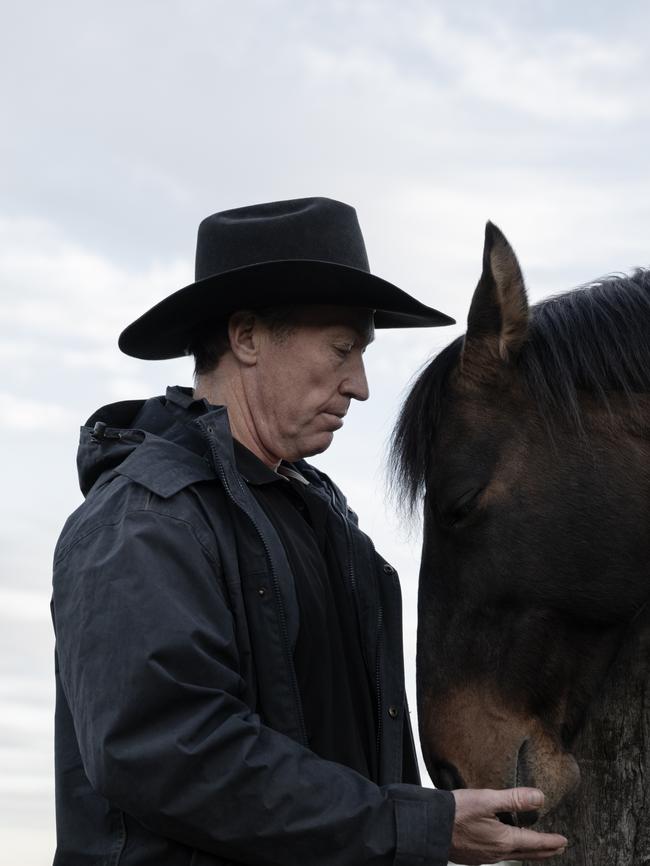
“All these guys I trained and competed with were massive names over there and are still revered today,” Robinson says. “You don’t realise how big it is as an Australian. These blokes would pack out the Houston Astrodome. It was massive. It’s the equivalent of being a first grade NRL or AFL player in Australia. It was exciting to be a part of it.
“I remember when we were competing in Wyoming and a family came up to me and asked me for an autograph. I thought they had me confused with someone else and apologised to them saying, ‘Sorry, I’m not a rider.’ They said: ‘We know who you are, you’re Dean Robinson, the Aussie steer wrestler.’ No worries, I thought. It was all a bit surreal.”
By the time he left the US in 1998, Robinson had competed at the highest level in the 1997 World Steer Wrestling Association titles, and only returned home on account of an injury. The plan was to recuperate at home in Australia and save enough money to return to Texas, where he had received six college offers and enrolled to study pre-med at North Central Texas College, and had also won a rodeo scholarship at Texas Tech University.
It was during his recuperation in Sydney that Robinson became more involved working with and training athletes. He was studying an exercise science degree at University of Western Sydney and a Masters in Physiotherapy, and he also did a stint at the NSW Institute of Sport. During that time he ran fitness programs for several swimmers who were training for the 2004 Athens Olympics, and then followed his brother into rugby league doing high performance training for the Manly Sea Eagles. He developed a reputation for bringing a science-driven approach to his work and for the high physical demands he placed on athletes. Robinson says it was the lessons he’d learnt from rodeo that guided him more than anything.
“Everyone thinks that in rodeo I am competing against him, or him, or him,” Robinson says. “It’s an amazing thing we do as humans but it’s actually wrong. We think our competition is against someone else. It’s not actually true. The other person has no impact on you. Competition is not external, it is internal.
“In rodeo my competition is with myself and the animal. ‘Can I get the best out of myself and this animal in this challenging situation?’ The guys I was being measured against were irrelevant. It was always about how I could be better if I focused on myself and the horse I was riding, the steer I was wrestling, rather than this external competition with my competitors. I might be measured against my competitors, but I am competing with myself.”
Robinson’s reputation as an innovator and as someone who demanded the highest levels of fitness saw word of his work spread beyond the NRL. In 2007 he was headhunted to the Geelong Cats AFL club and became part of a tight-knit, elite footballing team headed by senior coach Mark “Bomber” Thompson, future AFL senior coaches Ken Hinkley, Brenton Sanderson and Brendan McCartney, and head of football Neil Balme.
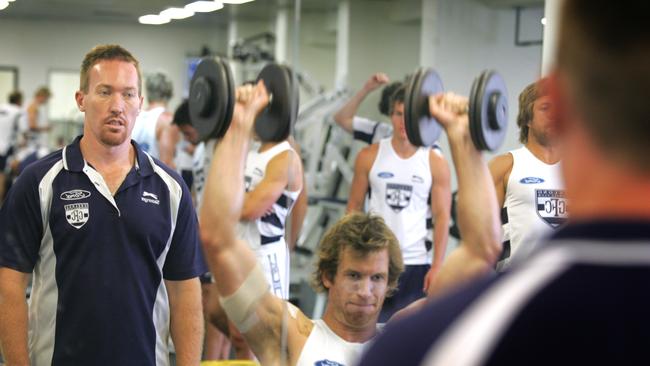
Geelong hadn’t won a premiership since 1963. They broke their 44-year drought with a history-making win against Port Adelaide in the 2007 Grand Final, their 119-point win the highest ever margin in a premiership decider. The Cats won again under Thompson in 2009 before he quit declaring himself bored of coaching, and again in 2011 under new coach Chris Scott who was lucky to inherit this famously well-drilled team.
Robinson’s lead role in this hardened Geelong team earned him the nickname that sits uncomfortably with him today – “The Weapon”, bestowed by others for his ability to give the Cats the physical and mental edge that made them such a dominant force.
He laughs awkwardly when asked about its origins. “I still don’t really know who came up with it,” he says. “I think it was from the 2006 preseason at Geelong. It might have been Balmy [Neil Balme] but I really can’t say who cooked it up. I’m stuck with it now.”
Word of The Weapon and the results he was achieving at the Cats became the talk of the AFL’s elite coaching community, with other clubs determined to secure Robinson’s services. In late 2010, he was lured to the fledgling Gold Coast Suns franchise to help the club establish itself in its 2011 foundation year in the AFL.
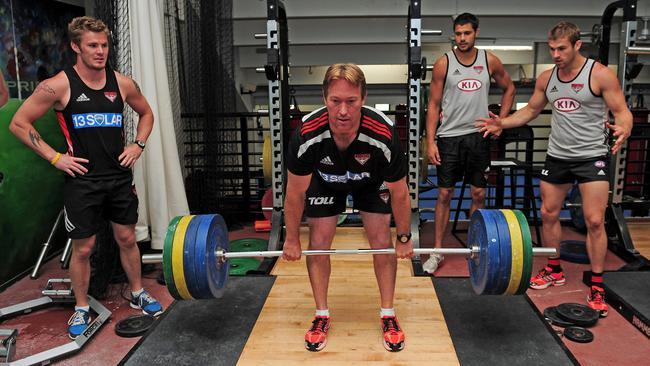
It was here that he developed a fateful partnership working alongside a biochemist and sports scientist by the name of Stephen Dank. The pair had first worked together at Manly but it was their shift to Gold Coast that drew them into the world of AFL and would eventually lead them to Essendon. Dank has been portrayed as one of the pre-eminent villains in the annals of Australian sport. He was billed as the central bad actor in the Essendon doping scandal that almost destroyed the club in February 2013 and plagues it to this day.
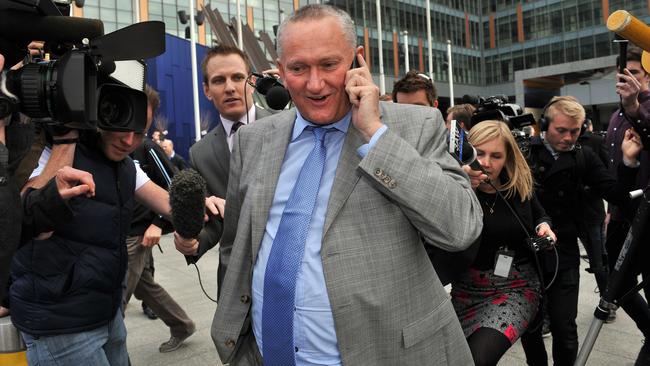
The Bombers were investigated by the Australian Sports Anti-Doping Authority and the World Anti-Doping Authority over the use of the banned peptide Thymosin beta-4, administered via subcutaneous injections, on 34 of the club’s players during the 2012 season. The 16 of those players still playing AFL football would go on to be banned from the 2016 season.
When the scandal broke after Essendon self-reported to the Australian Sports Anti-Doping Authority, former ASADA chief Richard Ings famously declared: “This is not a black day in Australian sport, this is the blackest day.” In the months and years that ensued the fallout had devastating impact on the club, acting like a wrecking ball as it destroyed lifelong friendships and almost claimed lives. Then coach and club champion James Hird attempted to take his life in a major depressive episode; friends of late club doctor Dr Bruce Reid say his death in 2020 from cancer was hastened by the pressure of it all; families who had been friends for generations never spoke again. Captain Jobe Watson had to hand back his Brownlow Medal for being the best and fairest player in the competition. And in February 2013, Dean Robinson was sacked as the club’s high performance manager, the sole immediate public casualty of what was a club-wide scandal in the immediate aftermath of the ASADA bombshell.
Dean Robinson and Stephen Dank had been headhunted by Essendon from the Gold Coast Suns ahead of the 2012 season. Essendon coach James Hird was a huge champion of their work, with Dank earning a reputation for pushing the boundaries of sports science, Robinson his perfect right-hand man as the club’s high performance manager. They came to Essendon as a tight-knit duo, almost like the hazer and the wrestler in a steer wrangling team. Dank did the hazing with his supplements program. The Weapon went to work turning men into super-fit, single-minded winning machines.
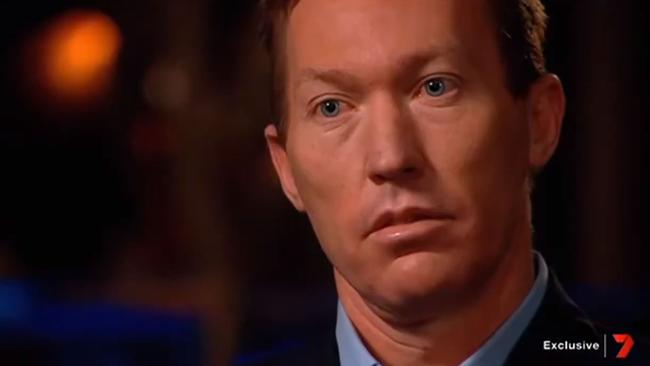
Robinson did a paid tell-all interview with Channel Seven in August 2013 in which he made explosive claims about the Essendon hierarchy’s knowledge of Dank’s supplements program. In response, Essendon described Robinson in a formal public statement as “a disgruntled, disaffected and discredited ex-employee”. Until now, Robinson has never again discussed what happened at Essendon. He remains circumspect, both by choice and for legal reasons. He sued the club for unfair dismissal, and was rumoured to have settled for almost $1 million.
Today, aged 49, Robinson says that sadness is his dominant emotion in reflecting on it all. Sadness at becoming persona non grata overnight with people he had come to regard as great friends, especially those at clubs beyond Essendon, where former mates figured that any ongoing association with Robinson would be bad for their reputation and advancement.
“It was like a bomb going off,” he says. “Because of the blast radius it was big. People tried to protect themselves. The way they reacted, the way they handled the situation, I don’t think anyone would look back and say they would do the same thing again.
“In terms of friendships that period of my life has basically gone. All those relationships have gone. People I recruited to Essendon, people I worked alongside, all that has gone. Pretty much everyone who was involved has drifted apart. It destroyed relationships, even relationships I had at Geelong. It split a lot of people.”
In the aftermath of his sacking, Robinson’s nickname was weaponised against him as the rumour mill fired up in the nastiest sports story Australia has seen. The club tried to paint him as a reckless hard man, even briefing journalists that he had injured players through his methods. “Some people made a thing of the fact that I signed off as ‘Wep’ in my text messages to players,” he says. “I only did it so that they knew who was talking to them. Everyone called me that anyway, but some people threw that back at me as if it was a sign of ego or something.
“Some of the comments about me being hard are true. Sometimes I push people. Sometimes I really push people. Did I push them to breaking point? I don’t think so. There were no boot camps. I just wanted to help people get the best out of themselves.”
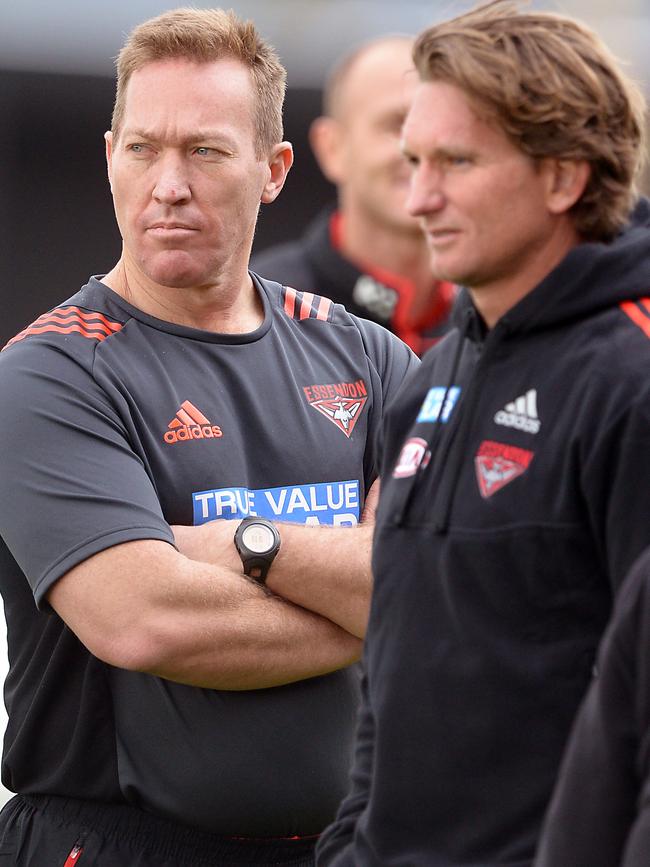
In the end Robinson was completely vindicated and received a letter from ASADA clearing him of any wrongdoing. He received strong public support from a raft of senior players including Geelong captain Joel Selwood, three-time Cats premiership player Paul Chapman, head of football Neil Balme and former Essendon vice-captain Mark McVeigh. But he is resigned to the fact that, to this day, some people still define him by the scandal.
“It is disappointing, but it is also human nature,” he says. “There was so much media, so many articles, so many opinions out there. I always said the truth would come out. I was wrong. I was naive at the time. The truth hasn’t come out and I don’t think it ever will.”
But he seems to share some version of truth when he says: “I’ve got a letter from ASADA clearing me. They had nothing to charge me with. It’s disappointing. Am I angry? No. Anger is only going to eat me up. But is it disappointing? Yeah, of course it is. It is disappointing that it affected so many lives. Mine included. I think everyone in it tried to protect themselves and do what they thought was right for them.
“I don’t want to be defined by that one bad period. And when I say bad period I don’t mean for me. It was a bad period for everyone but I don’t define myself by it. Others may. That’s their prerogative. I can only be honest and true to myself and live by a code of principles. At the end of the day I will be judged by those closest to me, and in the end by the ultimate judge.”
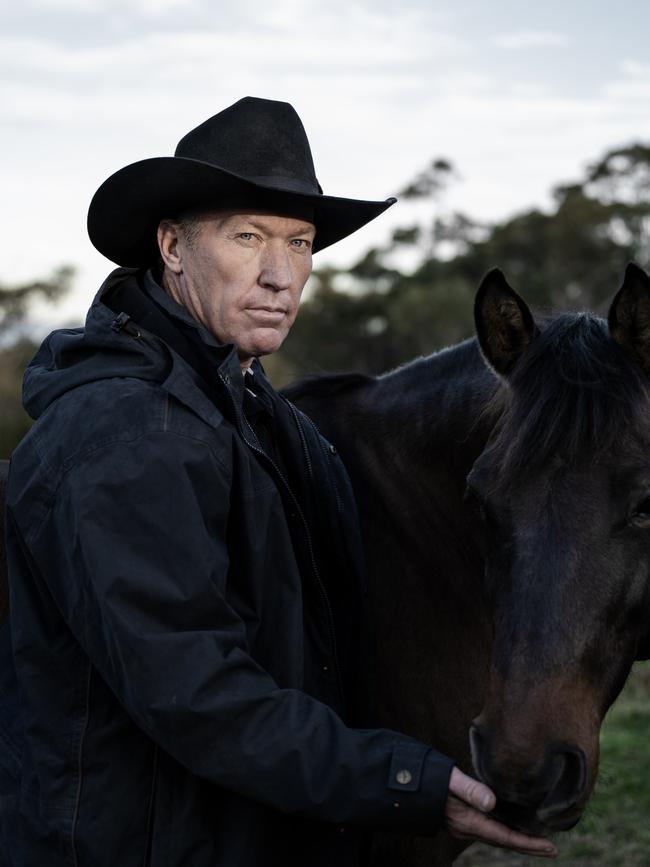
As for Essendon’s treatment of him, Robinson weighs his words. “I have got to be careful what I say,” he says. “I think the club acted in what they thought was its bests interests to protect its history and reputation. If they had their time again, maybe they would have done things differently. I will never know.
“When a story like that blows up and you have got that many PR companies and journalists feeding off it, you’re going to get a lot of things said and a lot of myths take hold. There were narratives that were needed and desired.”
In the aftermath of 2013 Robinson withdrew from sport and completed an MBA through the Melbourne Business School. He wanted to get away from the world that had consumed him for so long. He had had no dealings with any of the people he had worked alongside at Essendon. They include Stephen Dank, with whom he has not spoken since 2012.
Robinson says his business studies and the support of his family helped him get a new focus on his life and reassess his priorities. After finishing his degree he joined KPMG in 2015 working in mergers and acquisitions, with a special focus on agribusiness. He joined the publicly listed private equity firm TIP Group in 2019 as group chief financial officer, overseeing its listing on the stock exchange, and is now chief operating officer and company secretary overseeing around 580 staff.
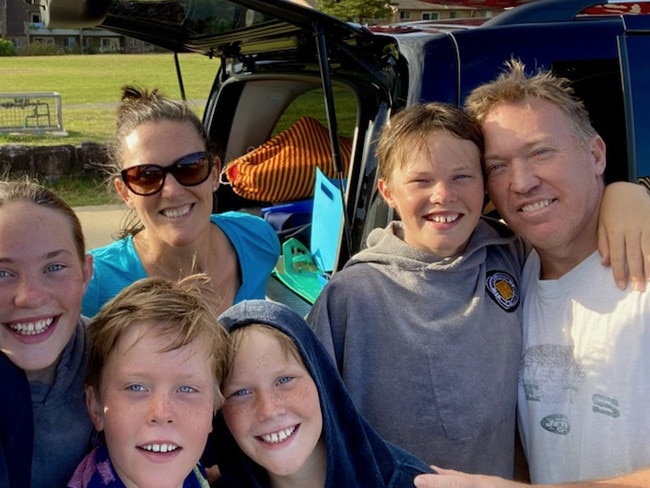
He believes the turmoil of 2013 has helped him succeed. “When I look back at what happened at Essendon I think some of the fractures occurred there because of the social fabric at the club and how I related to people there,” he says. “I hadn’t developed relationships and that was my downfall. Times have changed. I’m a better manager of people today than I was.
“That period shaped the way I am. It’s made me more circumspect. The pain and trauma I went through has made me look at the situation time and time again and ask what I could have done better, and what I did well. You have to learn from every moment. It’s our mistakes that allow us to learn.”
He is proud of what he has achieved and credits those closest to him for helping him through, principally his wife Tori and their four children, and his brother Trent, with whom he has partnered up at the Sydney Roosters doing fitness coaching.
“I had a choice to make after 2013,” he says. “Ten years is a short period of time but I think it comes down to the values of hard work which my mum instilled in both Trent and myself, plus the support of my wife and kids. You find out in the hard times who your friends are.
“I like that passage in the Bible, ‘If you are faithful in little things, you will be faithful in large ones’. I have realised since leaving sport that it’s possible to do things by yourself, but it’s a lonely journey.”
Lifeline 13 11 14; beyondblue.org.au

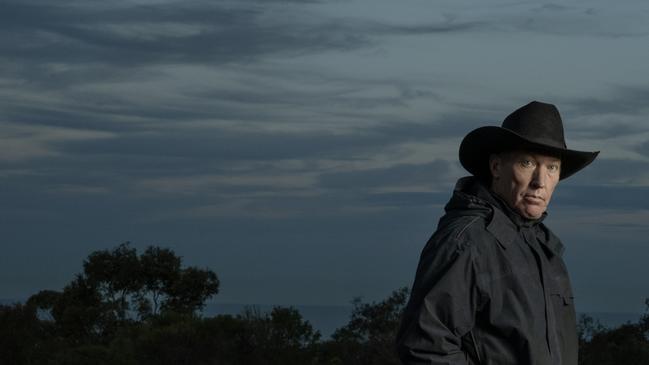

More Coverage
Add your comment to this story
To join the conversation, please log in. Don't have an account? Register
Join the conversation, you are commenting as Logout